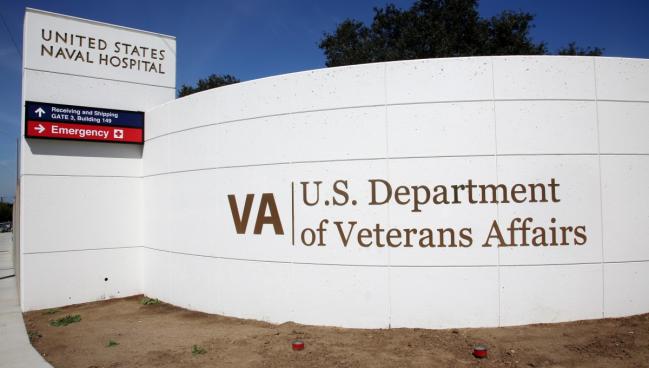Veterans Health System Meets—or Bests—Community Care for CVD
A review highlights how, amid shifts in care delivery, US veterans can still find high quality at their VA medical center.

For nearly all aspects of cardiovascular care, the Veterans Health Administration (VHA) system delivers outcomes that either match or improve upon those offered by community care, a new review asserts. That goes for the treatment of heart failure and acute MI, or procedures like transcatheter aortic valve replacement or elective PCI, the authors say.
Not only that, but veterans tend to have shorter wait times for services when going through the VHA, which includes 172 Veterans Affairs (VA) medical centers and 1,138 outpatient clinics. The integrated healthcare system, the largest in the United States, provides healthcare to 9 million US veterans each year.
Senior author Kreton O. Mavromatis, MD (VA Atlanta Health Care System, GA), told TCTMD that the review was inspired by the researchers’ desire to clarify the consequences of community care, which has become increasingly common following passage of the 2014 CHOICE Act and the 2018 MISSION Act. With community care, health services to veterans are delivered in facilities and by providers outside the VHA, but are still authorized and paid for by the VHA.
A crucial question is how the change is affecting cardiovascular medicine—especially given that almost 50% of veterans have some form of CVD, as compared with 27% of nonveterans.
“There was a big push for [community care] politically in 2018 and it's really grown since then, since a lot of veterans seem to be embracing it, and we wanted to really understand what the VA is getting into,” he said.
What they found, Mavromatis said, should inspire confidence in the quality of care being provided at VA medical centers and other VHA facilities.
Led by D. Elizabeth Le, MD, and Bhaskar L. Arora, MBBS (both from VA Portland Health Care System), the review was published in the February 2025 issue of JACC Advances. “The critical examination of this data is valuable for deriving healthcare policy, sharing novel and effective quality initiatives throughout the healthcare sector, and will help veterans and their providers make important healthcare decisions,” the authors say.
Morton Kern, MD (VA Long Beach Healthcare System, CA), offering an outside perspective, said it’s useful to see all this information laid out in a review. While “all of us who work in the VA follow these studies . . . as they’re published,” clinicians practicing in the community may not be as aware of the positive literature coming out, he commented to TCTMD.
“In general, I think the VA is really doing its job,” said Kern.
The January 20 inauguration of President Donald Trump has brought changes to the Department of Veterans Affairs, which runs the VHA. Like other federal agencies, it faces freezes on research funding and loss of personnel. Most recently, the department announced it would temporarily pause planned cuts to health services contracts.
As Good or Better
Mavromatis, based on his own firsthand experience within the VHA, said he isn’t surprised to see such good outcomes. “We always feel like we've been doing a good job,” he said. “We feel good about ourselves. [But] we're just one small cog in a giant VA wheel, you know, and just because we're doing a great job here in the Atlanta VA cardiology department, does that really mean something in the big picture?”
He pointed out that there are a lot of differences among VA medical centers, from small hospitals to large and academically affiliated sites.
“I actually would say that I am a bit surprised at the consistency of us actually being better than community care. I would have thought equal should be doable easily, but better? . . . We were pleased with that finding,” he commented.
Specifically, the VHA excels by offering lower heart failure mortality and readmission rates, as well as lower rates of CABG readmission, acute MI mortality, and elective PCI mortality compared with community care. For diabetes, the health system provides better risk control, as well. The VHA system and community care are on equal footing when it comes to CABG mortality and TAVR outcomes.
One weak spot for the VHA lies in acute MI readmission rates, which favor the community setting. The gap has held steady in recent years, “indicating this outcome metric remains a challenge,” the review’s authors say.
A unique strength of the VHA, they add, is its own quality-improvement initiatives: the Clinical Assessment, Reporting, and Tracking (CART) Program and the National Cardiac Device Surveillance Program (NCDSP).
Why Community Care?
Community care outside the VHA is allowed when the “required service not offered at VHA, wait time is more than 28 days, and drive time is more than 60 minutes,” the paper notes. “It can be argued that this shift is only beneficial if it improves veterans’ access to care with quality that is comparable or better than that delivered by the VHA.”
Distance is indeed a big driver, said Mavromatis. But it’s also sometimes true that veterans seek care at their local hospital or an academic medical center out of the expectation they’ll have a better experience there.
“I think there is a move on a lot of veterans’ parts to try to get what their neighbors are getting. They hear a lot of good things about [community care and] are thinking they may be missing out,” he said, adding, “But I will also say that a lot of veterans are perfectly happy with the direct VA care, too, so I think it's an individual choice.”
It’s not just patients, but clinicians may also be reluctant to embrace the VHA. Whether it’s due to a preference for the private sector, a lack of marketing by VA medical centers, or some other factor, “I do think there are misconceptions amongst providers that VA care may be a little subpar compared to the community care that they're used to,” said Mavromatis.
Kern, whose own career at the VA began in the mid-1980s, agreed there are misconceptions.
Many clinicians, thanks to what they encountered years ago in training, have the impression that cases treated in the VHA tend to be more challenging or complex, he said. “If you were a trainee at a university hospital and you were thrown into a VA, the VA got an unusual mix of patients. . . . But in reality, the care that was delivered to veterans was always on par or better, because they had more doctors looking at each patient [and] what I think were sufficient resources to deliver good-quality care.”
The training environment is different from the care-delivery environment, Kern explained. “If you’re a full-time VA employee, you see and sense the VA in a different way than you did when you were training.”
Admittedly, there have been “some black eyes given to the VA” over the years, said Kern, citing the 2014 controversy over negligent care in Phoenix, AZ. But those negative experiences were met with increased funding and resources, he added, which had the positive impact of resulting in improvements to care.
For the public, there’s also the impression—one that’s not entirely inaccurate—that VHA facilities tend to be older and don’t offer as many amenities like private rooms. Increasingly, though, this isn’t the case, Kern said. “That issue is now being addressed across the board as well.”
What Next
According to the review, the comparable or even superior care achieved at the VHA is an argument for strengthening the system. To this end, its authors offer a “road map” for future steps.
“Many veterans with access-to-care difficulties would experience greater health benefits from directly improving their access to VHA than from referring them to community care,” they write.
Prolonged wait times can be tackled with the investment of more resources while telecardiology can be used in cases where patients face long travel. In situations where a veteran would best be suited by community care, the VHA should continue to monitor quality and collaborate with the Centers for Medicare & Medicaid Services so that outcomes can be more easily compared across settings, the review advises.
“I think we're at a crossroads,” said Mavromatis. “The direct care budget for the VA has been quite flat in the last several years, while the community care budget has been increasing 30-50% a year.” Community care accounts for a third of all care provided through the VHA, a proportion expected to rise to about half in 2026, he added. “So it is really growing rapidly.”
As such, the politicians who shape and fund the VHA’s future need to consider whether they’d like this trend to continue or if instead “they're going to put resources into expanding access to direct VA care,” Mavromatis stressed.
Caitlin E. Cox is News Editor of TCTMD and Associate Director, Editorial Content at the Cardiovascular Research Foundation. She produces the…
Read Full BioSources
Le DE, Arora BL, Kelly FR, et al. The quality of Veterans Healthcare Administration cardiovascular care. JACC Advances. 2025;4:101533.
Disclosures
- Le, Arora, Mavromatis, and Kern report no relevant conflicts of interest.





Comments